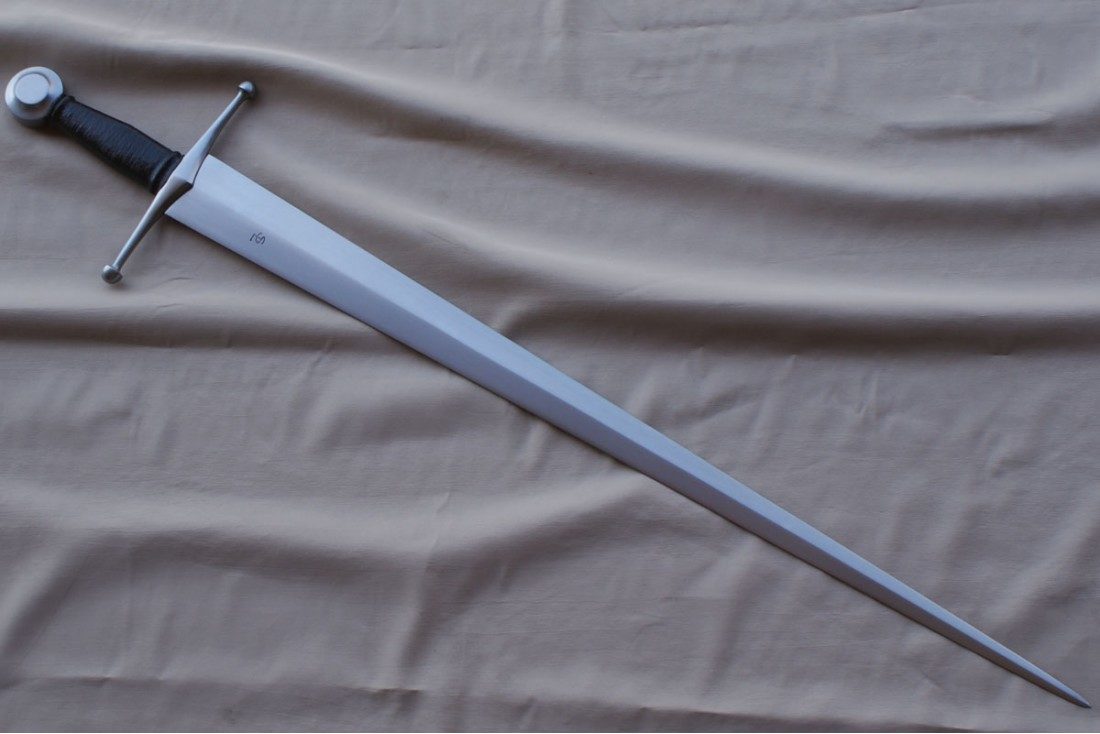
At its best this book provides a window into the world of elite medieval craftsmen, educated in the science, theology, and magics of the time. The book also features some lovely high-definition photos and exciting geometric diagrams. Johnson demonstrates how ratio and proportion were central elements of craftsmanship and cultural value. Aside from his work as a highly skilled swordsmith, Johnson has contributed new depths of understanding to how medieval artisans drew on classical geometry alongside religious and mystical theories to create swords that embodied their worldview and culture. Of particular interest is Peter Johnson's work on the form and physics of medieval swords. This volume contains some of the newest and most interesting thinking and research on the Medieval sword today. #2 The Sword - Form and Thought, Editors Lisa Deutscher, Mirjam Kaiser, Sixt Wetzler, 2019 If in doubt, check his later works where he updated some earlier assumptions. The major drawback of the 1964 work is that some dating methods have changed between then and now, and new pieces have come to light, meaning that aspects of the typology required reworking. He classifies the swords by blade type, hilt form and style families, all with an eye toward how the swords were actually used, making this work indispensable for modern sword lovers. It is his 1964 "The Sword in the Age of Chivalry" where he actually develops and fully explains his typology, which has become the most widely used sword typology in the English language. Although many people are familiar with his 1991 "Records of the Medieval Sword", Oakeshott viewed that text as largely a catalogue of some of his favorite swords. Ewart Oakeshott created this typology based on surviving swords and the art of the period to create a clear way to describe medieval swords and increase ease of communication about the artifacts. However, his systematic approach to swords was integral for developing his typology of medieval swords, for which he is justly famous. Oakeshott is, of course, not infallible, and some of his works have aged better than others. All of these authors provide some worthwhile information, but they are products of their times and their particular interests and relying overmuch on their perspectives is likely to lead a new scholar of the sword to some rather dubious conclusions. His work stands out in comparison to other 19th and 20th century work on swords as his focus was on the sword as a tool as well as a symbol. Other scholars tended to be largely focused on art and literature or were rather biased against the medieval period as a 'barbaric and simple' time, for example, some of the works of Sir Richard Burton, Egerton Castle and Captain Alfred Hutton. We had to include the work of Ewart Oakeshott in this list, and not just because of Arms and Armor's long partnership with The Oakeshott Institute. Rather, Oakeshott carried out a lifetime of research on European swords that sought to bring together an understanding of art, history, archaeology, and the practical uses of swords. #1 Sword in the Age of Chivalry by Ewart Oakeshott, 1965

Part of becoming really knowledgeable about swords is understanding how various experts approach the topic, and what we can learn from each of them. This list is by no means exhaustive, but it does give you an excellent place to ground your understanding of what a medieval sword is, how they varied across time and cultures, and what attributes separate an authentic sword from a "sword like object." If you read these books and pay attention you will realize that there are disagreements and differences of emphasis between the authors. We have put together the following list as a solid foundation for becoming a thoughtful scholar of the sword. Many others are of very questionable value either because they are quite antiquated in their understanding or because they view swords as historical artifacts without much understanding or context of how they really work when used as weapons.
Medieval swords full#
This can be particularly difficult because there are so many reference books on swords that are essentially coffee table books full of pretty pictures with little context. Just like any other topic, becoming reasonably knowledgeable about European swords requires a great deal of reading alongside practical studies (playing with swords). One of the biggest challenges for those who want to learn about swords is figuring out which sources are authoritative, and what each contributes to our knowledge about these historical objects.


 0 kommentar(er)
0 kommentar(er)
